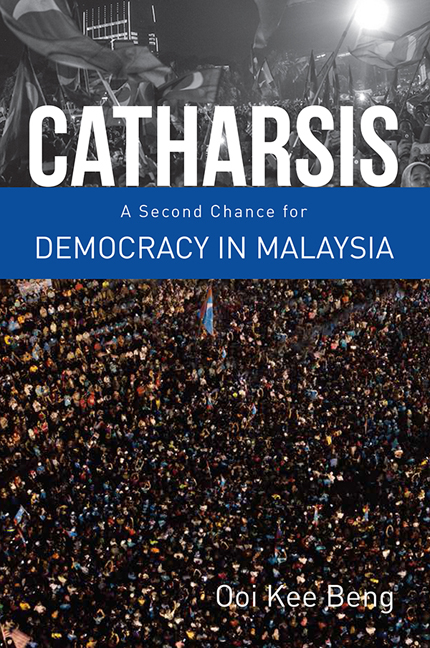Book contents
- Frontmatter
- Contents
- Foreword
- 1 Introduction – Malaysia's Future Is Redeemed
- Before Pakatan Harapan
- 2 After All These Years, Malaysia Is Still Held Hostage
- 3 Beyond the Nationalism Trap
- 4 Federating Malaysia — A Continuous and Troubled Process
- 5 Funeral for a True Son of Penang
- 6 Let's Work Out What Malaysia Is Good For
- 7 The Unity Fetish
- 8 When the National Narrative Loses the Script
- 9 Let's Be Cosmopolitan and Leave Multi-ethnicity Behind
- 10 Noses Don't Grow Back
- 11 Mahathir's Bersatu is Best Understood as an NGO
- Before 9 May 2018
- With Mahathir at the Helm
- Beyond 9 May 2018
- About the Author
4 - Federating Malaysia — A Continuous and Troubled Process
from Before Pakatan Harapan
Published online by Cambridge University Press: 12 February 2019
- Frontmatter
- Contents
- Foreword
- 1 Introduction – Malaysia's Future Is Redeemed
- Before Pakatan Harapan
- 2 After All These Years, Malaysia Is Still Held Hostage
- 3 Beyond the Nationalism Trap
- 4 Federating Malaysia — A Continuous and Troubled Process
- 5 Funeral for a True Son of Penang
- 6 Let's Work Out What Malaysia Is Good For
- 7 The Unity Fetish
- 8 When the National Narrative Loses the Script
- 9 Let's Be Cosmopolitan and Leave Multi-ethnicity Behind
- 10 Noses Don't Grow Back
- 11 Mahathir's Bersatu is Best Understood as an NGO
- Before 9 May 2018
- With Mahathir at the Helm
- Beyond 9 May 2018
- About the Author
Summary
PM's cover story this month is about East Malaysia and how unknown a territory it has always been to Malaysians on the peninsula. To start with, we need to remind ourselves of how troubled the beginnings of the Federation of Malaya actually were – and I don't only mean the Indonesian decision to initiate undeclared war against the new polity.
The situation in the region in the two decades following the end of the Japanese Occupation of Southeast Asia, was fragile whichever way you look at it: states were emerging without clear ideas about what nations they would represent or craft or about what territorial borders for that matter; and international communism was seriously challenging the world order in the wake of the failure by Germany, Italy and Japan to do the same.
Furthermore, the old colonial powers were in hasty retreat from the region and were therefore fully focused on political and military rearguard actions. America had just inherited the front position where the western world was concerned.
That is the larger picture.
The influence that global conflicts and late-colonial expediencies had on Malaysia's constitution and history was undeniably great. However, local political, legal and notional factors impacting the nature of the new federation turn out to have left more traumatic aftereffects than regional events like the Konfrontasi or the Vietnam War have done.
Despite the close proximity and the common history, Singapore fitted quite uncomfortably into Malaya at that point. Its unionist movement and labour laws were much more developed than on the peninsular mainland; the largely Chinese population on the island outnumbered all over communities taken together by 875,000; and the two education systems were politically incompatible.
As we know, the split between the Federation of Malaysia and Singapore came in 1965 after two years of mutual enmity and with fear of civil war in the air. Sabah and Sarawak stayed within the Federation till today.
Unlike Singapore, the states in Borneo were underpopulated and undeveloped territories and politically underdeveloped in 1963; and when they co-founded the Federation were granted a huge overrepresentation in parliamentary seats. Singapore's 1,750,000 persons gave it 15 members of parliament while Sabah and Sarawak together, with a population of about 850,000 would have 40. Malaya would have 104 representatives.
- Type
- Chapter
- Information
- CatharsisA Second Chance for Democracy in Malaysia, pp. 13 - 15Publisher: ISEAS–Yusof Ishak InstitutePrint publication year: 2018

